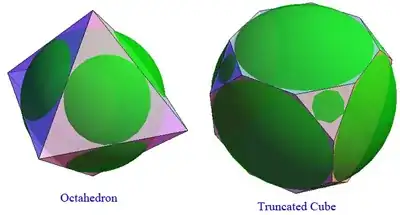The (remarkable) midsphere theorem says that each combinatorial
type of convex polyhedron may be realized by one all of whose edges are
tangent to a sphere
(and the realization is unique if the center of gravity is specified).

Q1. Is there an analogous theorem for 4-polytopes, that each combinatorial type may be realized by a polytope with ridges (or edges?) tangent to a 3-sphere?
Because the proofs of the midsphere theorem rely on the Koebe–Andreev–Thurston circle-packing theorem, a related query is:
Q2. Is there a generalization of the circle-packing theorem to sphere-packing?
Both questions may be generalized to arbitrary dimension.
I suspect the answer to both questions may be No, in which case a pointer would suffice. Thanks!